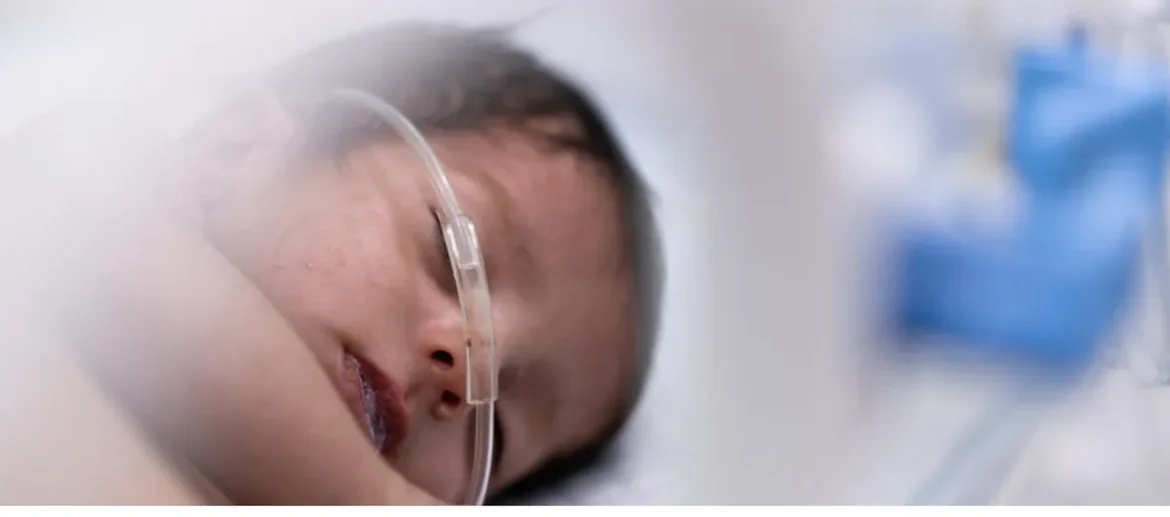Table of Contents
Health experts have announced new guidelines for faster medical tests that could prevent thousands of baby deaths across Africa. The tests are designed to quickly detect sepsis, a deadly infection that kills many newborns before doctors can properly treat them.
Lynette Atieno from Kenya knows the pain of losing a baby to sepsis. Her son appeared healthy when he was born, but within days he became weak and his skin turned grey.
“He was just seven days old,” Atieno said. “The doctors said it was sepsis. If they had known sooner, maybe things would have been different.”
Her experience mirrors that of many African mothers. In Nigeria, Amina Yusuf faced a similar tragedy when her baby died from an infection.
“They told me my baby had an infection, but the test took too long,” Yusuf recalled. “She was gone by the time the results came in.”
The Scale of the Problem
Sepsis is a life-threatening condition that occurs when the body’s response to infection damages its own tissues. Medical experts say sepsis causes about 15% of the 2.3 million baby deaths that happen worldwide each year.
Most of these deaths occur in low and middle-income countries, where medical equipment for testing is often slow, hard to access, or too expensive for families to afford.
Currently, doctors in many African hospitals have to rely on slow blood tests that can take several days to show results. Some infections are missed entirely in their early stages when treatment would be most effective.
Without reliable testing, healthcare workers often have to guess whether a baby has sepsis based only on symptoms. This leads to delayed treatment or unnecessary use of antibiotics, which can create drug-resistant bacteria.
New Guidelines Released
On 6 August, the World Health Organisation (WHO) released new guidelines to help companies develop faster and more accurate tests for serious bacterial infections in babies under two months old.
Dr Yvan Hutin, who leads the WHO’s department on antimicrobial resistance, explained the importance of these new tests.
“Timely and accurate diagnostic tests for serious bacterial infection are critical to reducing newborn mortality,” Hutin said.
The current testing methods are not suitable for hospitals and clinics with limited resources. Blood culture tests and molecular tests require advanced laboratories and can take days to deliver results.
What the New Tests Must Do
The WHO guidelines outline what the next generation of tests must achieve. The main requirements are that they must be affordable, fast, and simple enough to use even in rural clinics without advanced equipment.
The ideal test would allow healthcare workers to determine within hours whether a baby needs antibiotics or urgent hospital care. This would be a major improvement over current methods that can take several days.
Dr Silvia Bertagnolio, WHO’s head of antimicrobial resistance surveillance, emphasised how important early diagnosis is for saving lives.
“Early diagnosis can mean the difference between life and death,” Bertagnolio said. “This isn’t just about better tests; it’s about giving every newborn a fighting chance.”
Target Audience for Guidelines
The WHO guidelines are aimed at three main groups: companies that make medical tests, government health departments, and international health organisations.
These groups now have clear specifications for what kind of tests need to be developed and how they should work in real-world conditions across Africa and other developing regions.
Hope for the Future
The new guidelines represent hope for mothers like Lynette Atieno and Amina Yusuf, who have experienced the devastating loss of their babies to sepsis.
Both women hope that other mothers will not have to go through the same trauma they experienced.
“If another mother doesn’t have to lose her baby like I did, then maybe my pain wasn’t for nothing,” Atieno said.
Challenges Ahead
While the new guidelines are a positive step, turning them into reality will take time and resources. Companies need to develop the tests, governments need to approve them, and health systems need to be able to afford and use them.
The success of these new diagnostic tools will depend on making them truly accessible to the rural clinics and understaffed hospitals where many African babies are born.
For now, the guidelines provide a clear roadmap for what needs to be achieved. The hope is that within a few years, no mother will have to wait days for test results while her baby’s life hangs in the balance.
Impact on Healthcare
If successful, these new tests could transform healthcare for newborns across Africa. Healthcare workers would be able to make faster decisions about treatment, potentially saving thousands of lives each year.
The tests would also help reduce the overuse of antibiotics, which contributes to the growing problem of drug-resistant infections.
Most importantly, they would give families hope that their babies can receive the quick, accurate diagnosis they need to survive those critical first weeks of life.





3 comments
https://shorturl.fm/tSQR4
https://shorturl.fm/kypVu
https://shorturl.fm/r2Dw0